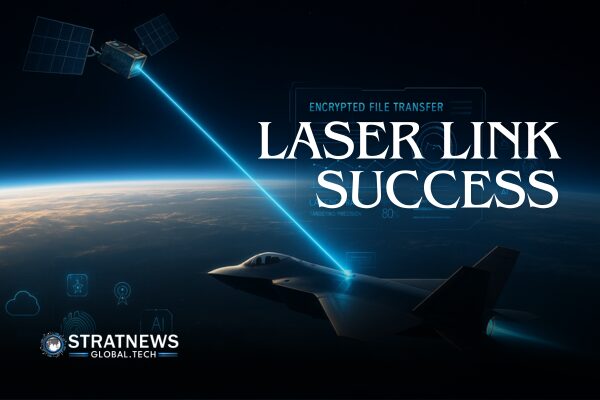Laser Link Between Aircraft and Satellite Shows Major Progress
A recent test successfully demonstrated laser communication between an aircraft and a satellite. This breakthrough marks a big step forward in secure and fast data sharing across air and space platforms.
Successful Air-to-Space Laser Test
In July, a laser communications terminal from General Atomics Electromagnetic Systems (GA-EMS) was mounted on a 12-inch turret aboard a De Havilland Twin Otter aircraft. While the aircraft was in flight, it connected with a Kepler Communications satellite in low Earth orbit. This satellite was fitted with an optical terminal from Tesat-Spacecom.
The airborne terminal locked onto the satellite’s laser signal and maintained the connection long enough to send and receive data packets. The companies confirmed the test’s success on 2 September.
Proving Interoperability Between Different Systems
This demonstration was designed to show that laser communications systems from different manufacturers can work together. It followed the Optical Communications Terminal (OCT) standard set by the Space Development Agency (SDA), a branch of the US Space Force.
Previously, companies developed their own systems that often failed to connect due to proprietary designs. The SDA standard aims to solve this issue by ensuring all terminals follow the same guidelines.
According to SDA deputy director Gurpartap “GP” Sandhoo, the test shows how laser communication is becoming more reliable. He said the result confirms SDA’s role in pushing forward resilient space networks.
Gregg Burgess, GA-EMS vice president for space systems, also noted that the test proved the SDA standard works even when equipment comes from two different companies.
Towards a Broader Space Network
This trial is part of a larger plan called the Proliferated Warfighter Space Architecture (PWSA). Managed by SDA, this project will use hundreds of low-Earth orbit satellites to deliver global communications and missile tracking for the US and its allies.
Laser communications offer faster data transfer and better security than traditional radio signals. They are harder to jam or intercept, making them ideal for military and defence use.
Although this was not the first test of its kind, earlier attempts had failed. The last trial by GA-EMS was unsuccessful due to issues with the satellite involved. However, this latest test marks a clear advancement.
Kepler had already launched two SDA-compatible satellites in November last year, each carrying Tesat-Spacecom’s Scot 80 terminals. These were the ones used in the recent test.
Robert Conrad, president of Kepler US, said the test showed how space and aviation systems can now operate as one. Under another SDA contract, GA-EMS is also building two optical terminals for its GA-75 spacecraft. These are set to launch in 2026 and will extend the use of these systems in space.


